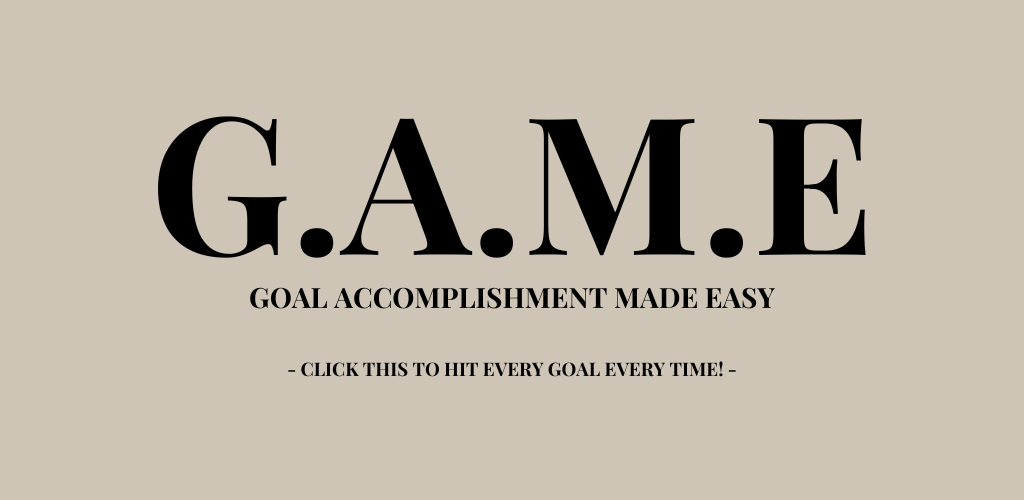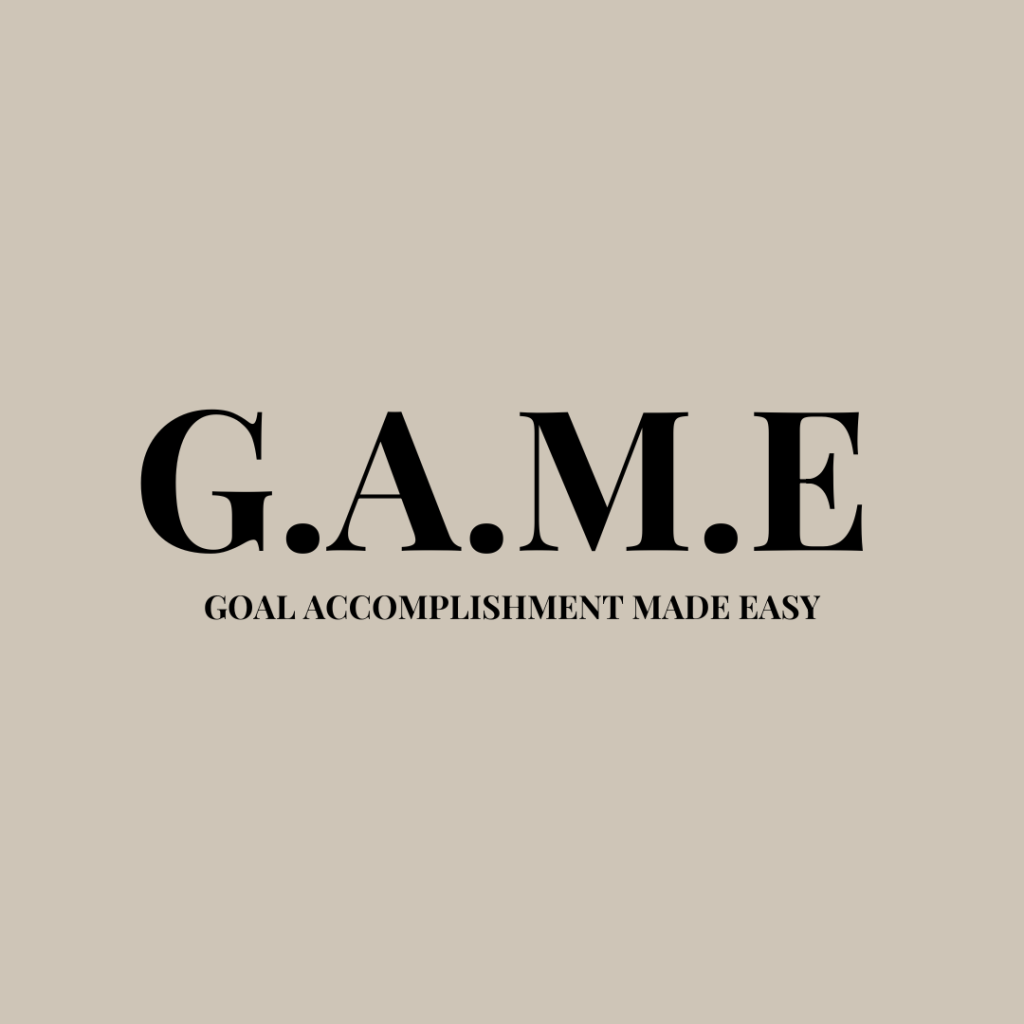How to Make Your Brain WANT to Work– Goal Accomplishment Made Easy
Hello Fellow Ambitionists,
Welcome to Goal Accomplishment Made Easy! Ever sit down to work and find your mind wandering, your motivation lacking, and your brain resisting the tasks at hand? It’s a common struggle, but the good news is that you can actually train your brain to WANT to work. By understanding the science of motivation, breaking tasks into manageable parts, and incorporating some smart strategies, you can make working feel more rewarding and less of a struggle. Let’s explore how to make your brain cooperate and even look forward to getting things done.
1. Tap into Intrinsic Motivation
Your brain is more likely to engage in tasks that feel meaningful or rewarding on a personal level. This is called intrinsic motivation, which comes from doing something because you find it inherently satisfying or enjoyable, rather than for external rewards like money or praise.
Solution:
Connect your work to something personally meaningful. Instead of focusing solely on external outcomes like deadlines or income, think about the deeper reason why the task matters. Does it align with your values, long-term goals, or personal growth? The more connected you feel to the purpose behind your work, the more motivated your brain will be to engage.

2. Use the Reward System
Your brain loves rewards, especially when they come quickly. Dopamine, the brain’s “feel-good” chemical, is released when you experience pleasure, making your brain crave the behavior that caused it. You can use this to your advantage by setting up small rewards for completing tasks.
Solution:
Break your work into small, manageable chunks and reward yourself after completing each one. These rewards can be as simple as taking a five-minute break, enjoying a favorite snack, or listening to a song you love. By linking work with quick, satisfying rewards, you’ll train your brain to associate productivity with positive outcomes.
3. Make the Task Less Overwhelming
When a task feels too large or overwhelming, your brain naturally resists it. It perceives the task as a threat to your comfort, leading to procrastination. The trick is to make the task seem smaller and more approachable.
Solution:
Break large tasks into smaller, bite-sized steps. Start by tackling the easiest part of the task first. Once you get started and make a little progress, your brain will feel less intimidated, and momentum will begin to build. As each small step is completed, the task will feel more achievable, making your brain more willing to work.

4. Leverage the Power of Routines
Routines help your brain know what to expect and when to expect it. Once a task becomes a part of your routine, it requires less mental effort to begin, and your brain will be more likely to go along with the process without resistance.
Solution:
Create a daily work routine that includes specific times for focused work, breaks, and relaxation. The more consistent your routine, the more likely your brain is to view work as a natural part of the day rather than a chore to resist. Over time, your brain will adapt to this pattern, making it easier to get started without procrastinating.
5. Optimize Your Environment
Your surroundings have a significant impact on how willing your brain is to work. A cluttered or distracting environment can make it harder for your brain to focus, while a clean and organized space can signal to your brain that it’s time to work.
Solution:
Create a work environment that’s conducive to focus. Declutter your workspace, remove distractions, and add elements that boost your productivity, such as natural light or plants. When your brain associates your environment with focus and productivity, it will be more inclined to work when you enter that space.

6. Use the Two-Minute Rule
The hardest part of getting started is often just that—getting started. Once you begin a task, your brain typically gets into the flow of the work. The Two-Minute Rule helps you trick your brain into starting without overthinking.
Solution:
Commit to working on a task for just two minutes. Set a timer and focus on the task for those two minutes. After that, if you feel like stopping, you can—but more often than not, you’ll find that once you’ve started, your brain will be willing to continue. This small push can help your brain overcome the initial resistance to work.
7. Make Work Enjoyable
Your brain is more likely to want to work if it doesn’t associate the task with stress or boredom. By making your work environment and the task itself more enjoyable, you reduce the brain’s resistance and make working feel more pleasant.
Solution:
Add elements of enjoyment to your work. Play background music, light a candle, or use colorful, fun tools. You can also gamify your tasks—turn them into a challenge where you “win” by completing certain steps. The more enjoyable you make the process, the more your brain will look forward to working.

8. Visualize the Benefits
Your brain is wired to seek immediate gratification, so if the benefits of your work are far off in the future, it can be harder to stay motivated. Visualization can help you close that gap and give your brain a taste of the rewards that lie ahead.
Solution:
Take a few moments before starting work to visualize the positive outcomes of completing your task. Imagine how good it will feel to finish the project, meet your goal, or move one step closer to success. This mental imagery can help your brain stay focused on the rewards, making the task itself feel more worthwhile.
9. Remove the Pressure
Sometimes, the pressure to perform perfectly or to complete a task under tight deadlines can paralyze your brain, making it more resistant to work. When work feels like a high-stakes situation, your brain may go into “fight or flight” mode, causing you to procrastinate or avoid the task entirely.
Solution:
Give yourself permission to work imperfectly. Start by telling yourself that it’s okay to make mistakes or to do the task imperfectly at first. The goal is to get moving and build momentum, rather than focusing on getting it perfect the first time. Removing the pressure allows your brain to relax and engage more willingly in the task.

10. Stay Physically Active
Physical movement has a powerful effect on brain function. Exercise releases endorphins and increases blood flow to the brain, improving focus and reducing stress. This helps your brain feel more ready and energized to work.
Solution:
Incorporate physical activity into your daily routine. Even a short walk, some stretching, or a quick workout can help re-energize your brain and boost your willingness to dive into work. Regular physical activity also improves your overall cognitive function, making it easier for your brain to stay productive throughout the day.
Conclusion: Train Your Brain to Want to Work
Your brain’s natural inclination may not always be to jump into work, but with the right strategies, you can train it to want to work. By tapping into intrinsic motivation, creating rewarding experiences, and optimizing your environment, you can shift your brain’s focus from avoiding work to embracing it.
Remember, the key to making your brain want to work is to make tasks feel rewarding, enjoyable, and manageable. With practice and consistency, you’ll find that getting started becomes easier, and your brain becomes an ally in your pursuit of productivity and success.

Are you ready to turn your intentions into actions and your goals into accomplishments? Then join Goal Accomplishment Made Easy today!
You’ll get:
- Weekly challenges to push you outside your comfort zone and build momentum.
- Monthly focus workbooks to help you stay on track with your personal growth.
- Weekly goal check-in emails to keep you motivated and on target.
- Mini coaching sessions for support whenever you need it.
- Four live accountability sessions every month to keep you on track and progressing.
Don’t wait any longer— join Goal Accomplishment Made Easy today!






